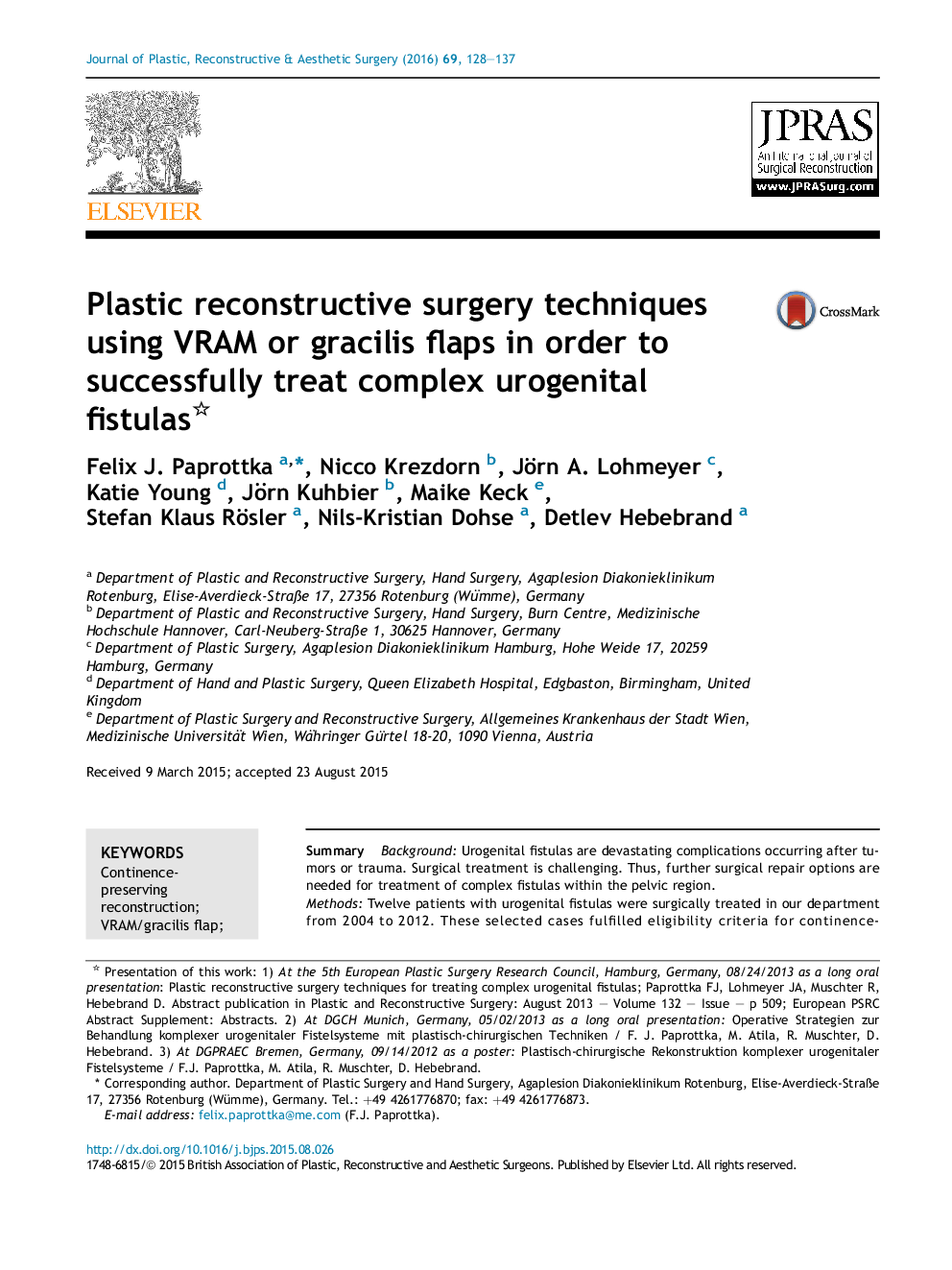| Article ID | Journal | Published Year | Pages | File Type |
|---|---|---|---|---|
| 4116987 | Journal of Plastic, Reconstructive & Aesthetic Surgery | 2016 | 10 Pages |
SummaryBackgroundUrogenital fistulas are devastating complications occurring after tumors or trauma. Surgical treatment is challenging. Thus, further surgical repair options are needed for treatment of complex fistulas within the pelvic region.MethodsTwelve patients with urogenital fistulas were surgically treated in our department from 2004 to 2012. These selected cases fulfilled eligibility criteria for continence-preserving surgery – a history of fistula recurrences with ongoing incontinence after receiving at least two surgical attempts. Five VRAM and eight gracilis flaps were used to cover up given tissue defects and to perform functional continence-preserving reconstruction with mean follow-up of 6.3 years. Data were retrospectively reviewed, and standardized survey was performed to evaluate quality of life of all living patients (n = 10).ResultsIn all cases, final surgical treatment of the given fistulae by VRAM or gracilis flaps could be achieved, with mean operating time of 5:31 h (range: 4:50–6:48 h) for VRAM flap and 3:11 h (range: 2:04–4:42 h) for gracilis flap. Outcome measures were primarily to avoid fistula recurrence after plastic surgical treatment, and secondary quality of life and survival. All patients had their continence preserved, but two patients died during follow-up period. Postoperative assessment revealed the following: VRAM flap patients (n = 3) showed slight incontinence during the follow-up period, whereas continence was restored in all patients with gracilis flap reconstruction (n = 7). Quality-of-life assessment indicated restoration of quality of life in comparison to general population (women > men). Furthermore, key points of the two presented surgical techniques are demonstrated in detail.ConclusionWith preformed VRAM or gracilis flaps, complex urogenital fistulas can be successfully eradicated and continence is restored. The main focus should be the recovery of quality of life, which could be successfully regained. Nevertheless, the continence success rate has to be defined on an individual, case-by-case basis.Level of evidenceOriginal work, cohort study level III.
